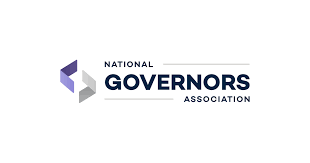Whatever the future of work may be, there’s one thing we know for sure: young people today will be doing most of it. The U.S. is currently going through one of the most profound demographic shifts in its history, with … Read More
Data

CDC Guidance for Communities Assessing, Investigating and Responding to Suicide Clusters, United States, 2024
Introduction In 2021, approximately 48,000 lives were lost to suicide in the United States. During this time, suicide was among the 10 leading causes of death among persons aged 10–64 years and the second leading cause of death among children … Read More

FASD United Fetal Alcohol Spectrum Disorders (FASD) Resource Directory
Search the FASD Resource Directory for FASD United affiliates, diagnostic services, support groups, prevention programs, and other resources. Due to a lack of trained professionals and recognition of FASD it can be a challenge to quickly identify accessible FASD-informed services. … Read More

The Unintended Consequences of“Lack of Supervision”Child Neglect Laws: How Developmental Science Can Inform Policies about Childhood Independence and Child Protection
Policies and programs designed to serve children and families are built upon a general understanding of child development. Developmental research has tried to expand that understanding and determine the typical ages at which children acquire certain skills and capabilities, while … Read More

Discrimination In Multi-Phase Systems: Evidence From Child Protection
Introduction Large racial disparities have been documented in many high-stakes settings—such as employment, healthcare, housing, and criminal justice—raising concerns of discrimination by individual decision-makers. At the same time, there is growing understanding that a focus on individual decisions can yield … Read More

Recommendations for Regulating Artificial Intelligence to Minimize Risks to Children and Their Families
From January 2023 to March 2024, multiple entities have published guidance on artificial intelligence (AI), underscoring growing public concerns regarding AI governance. Meanwhile, as federal and state legislators weigh the need for AI regulations to safeguard the public from various risks, recent discourse … Read More

Transforming How We Deliver Prevention Services
The 2023/2024 Prevention Resource Guide was created with input from a broad representation of national experts, including national child abuse prevention partners and colleagues on the Federal Inter-Agency Work Group on Child Abuse and Neglect as well as parents with … Read More

Creating Equitable Ecosystems of Belonging and Opportunity for Youth An Action Guide for Cross-System and Sector Leaders and Practitioners
Ecosystem for Youth Belonging and Opportunity The concept of a youth development ecosystem, builds from and expands upon Urie Bronfenbrenner’s Ecological Systems Theory, which views child development within the context of the system of relationships that form their environment. Broffenbrenner, … Read More

Building And Empowering Impactful Children’s Cabinets
Background Childrens cabinets typically comprise key public and private sector experts and can be critical to the cross-agency coordination of the Governor’s children’s initiatives. A powerful tool in a Governor’s arsenal, they can foster momentum across multiple different departments and … Read More

Bridging the Gaps: Child Welfare’s Vital Role in Public Health Emergencies Addressing Intimate Partner Violence
The National Academies report, “Essential Health Care Services Addressing Intimate Partner Violence,” released on January 11, 2024, serves as a pivotal resource for child welfare agencies and their staff to be effective partners with other key governmental agencies to address … Read More

